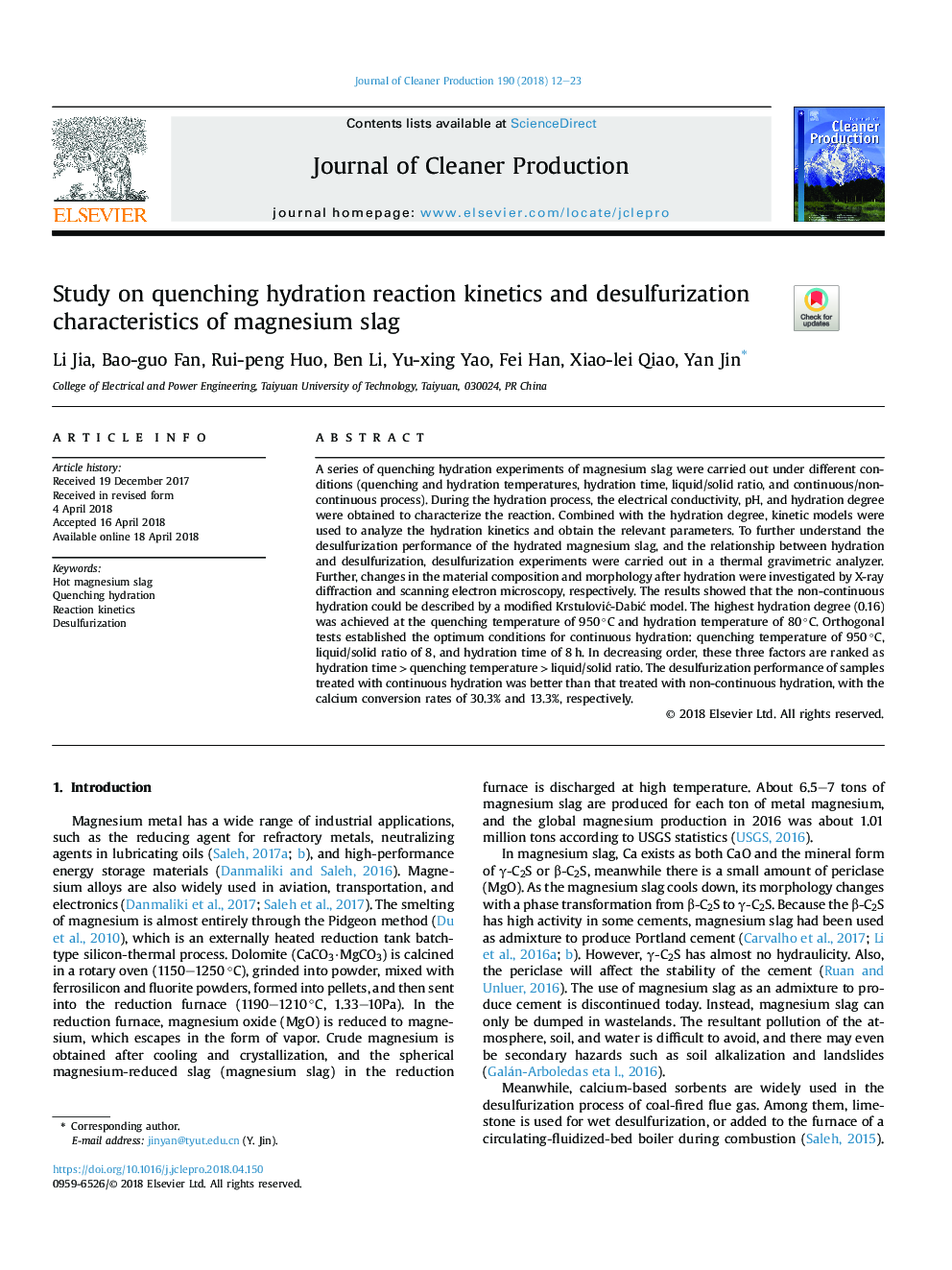| Article ID | Journal | Published Year | Pages | File Type |
|---|---|---|---|---|
| 8094847 | Journal of Cleaner Production | 2018 | 12 Pages |
Abstract
A series of quenching hydration experiments of magnesium slag were carried out under different conditions (quenching and hydration temperatures, hydration time, liquid/solid ratio, and continuous/non-continuous process). During the hydration process, the electrical conductivity, pH, and hydration degree were obtained to characterize the reaction. Combined with the hydration degree, kinetic models were used to analyze the hydration kinetics and obtain the relevant parameters. To further understand the desulfurization performance of the hydrated magnesium slag, and the relationship between hydration and desulfurization, desulfurization experiments were carried out in a thermal gravimetric analyzer. Further, changes in the material composition and morphology after hydration were investigated by X-ray diffraction and scanning electron microscopy, respectively. The results showed that the non-continuous hydration could be described by a modified KrstuloviÄ-DabiÄ model. The highest hydration degree (0.16) was achieved at the quenching temperature of 950â¯Â°C and hydration temperature of 80â¯Â°C. Orthogonal tests established the optimum conditions for continuous hydration: quenching temperature of 950â¯Â°C, liquid/solid ratio of 8, and hydration time of 8â¯h. In decreasing order, these three factors are ranked as hydration timeâ¯>â¯quenching temperatureâ¯>â¯liquid/solid ratio. The desulfurization performance of samples treated with continuous hydration was better than that treated with non-continuous hydration, with the calcium conversion rates of 30.3% and 13.3%, respectively.
Keywords
Related Topics
Physical Sciences and Engineering
Energy
Renewable Energy, Sustainability and the Environment
Authors
Li Jia, Bao-guo Fan, Rui-peng Huo, Ben Li, Yu-xing Yao, Fei Han, Xiao-lei Qiao, Yan Jin,
